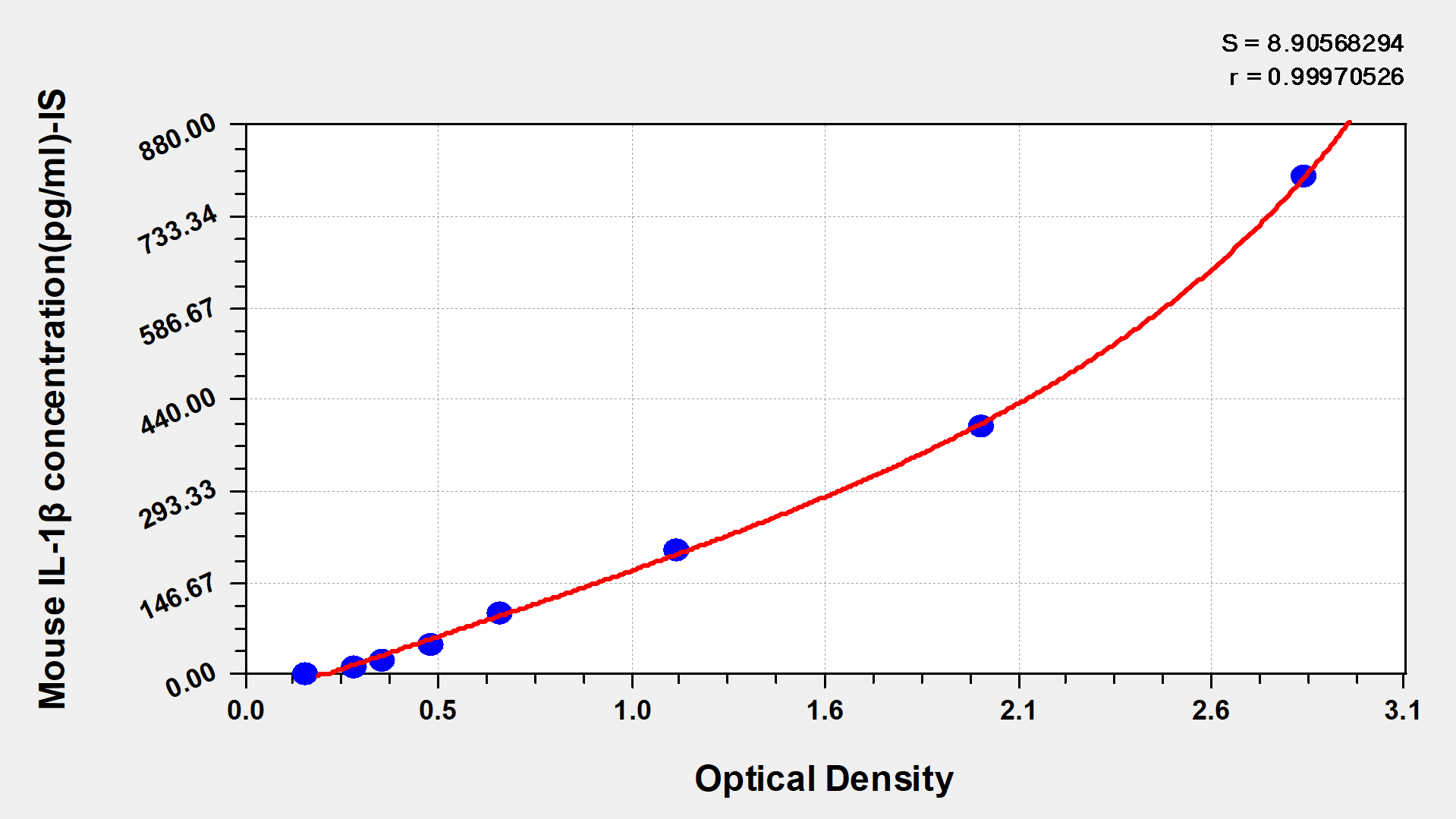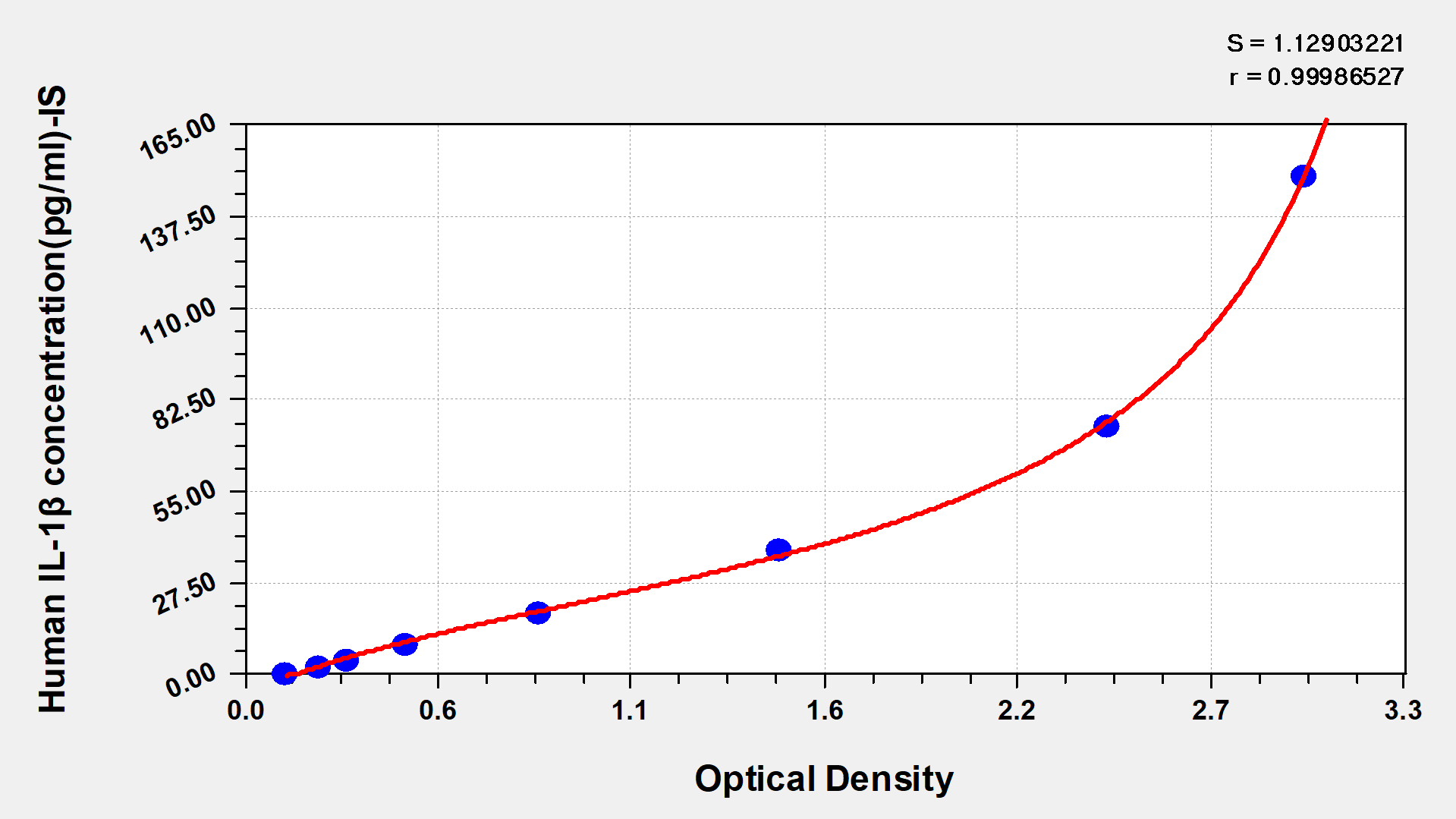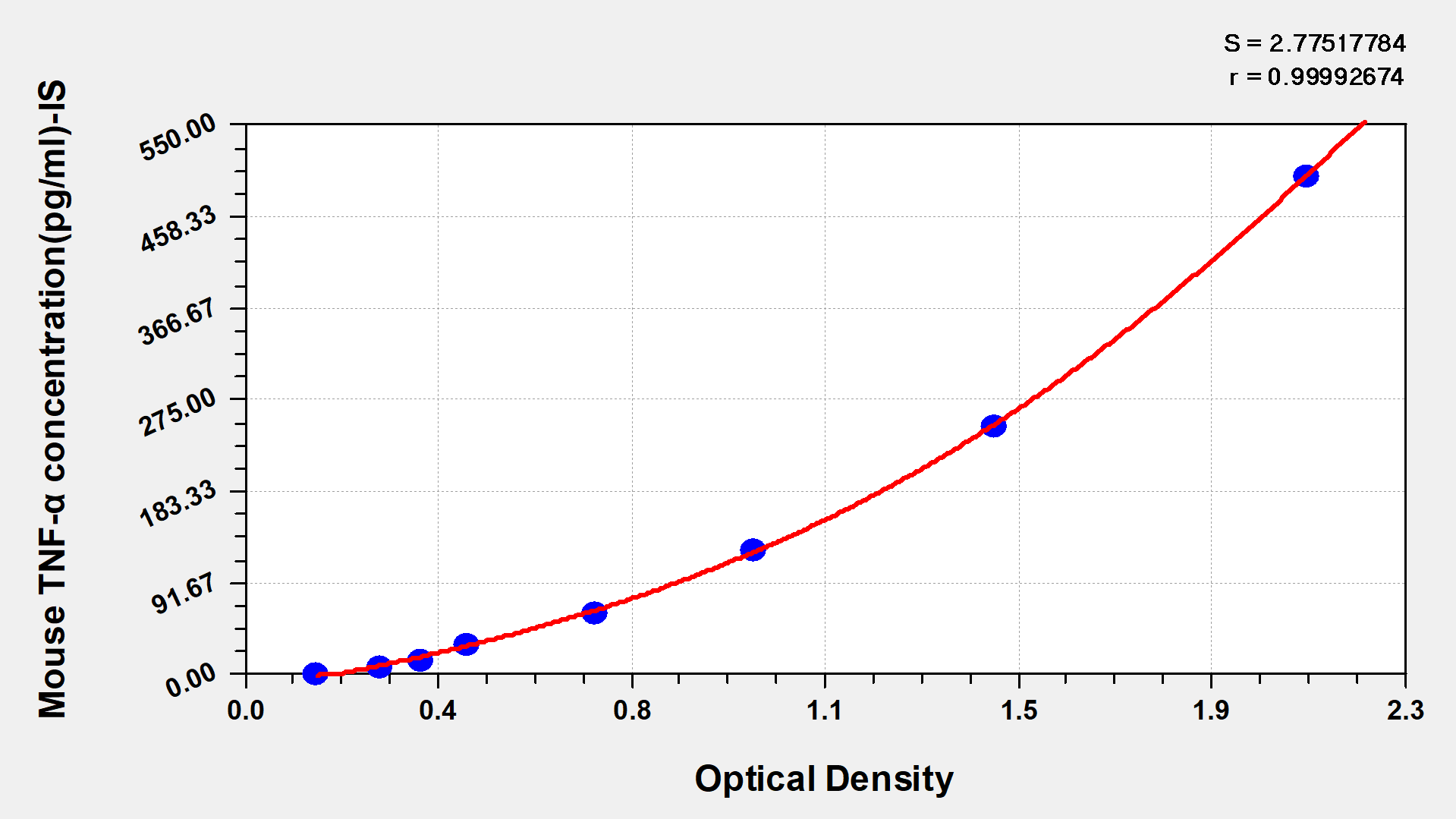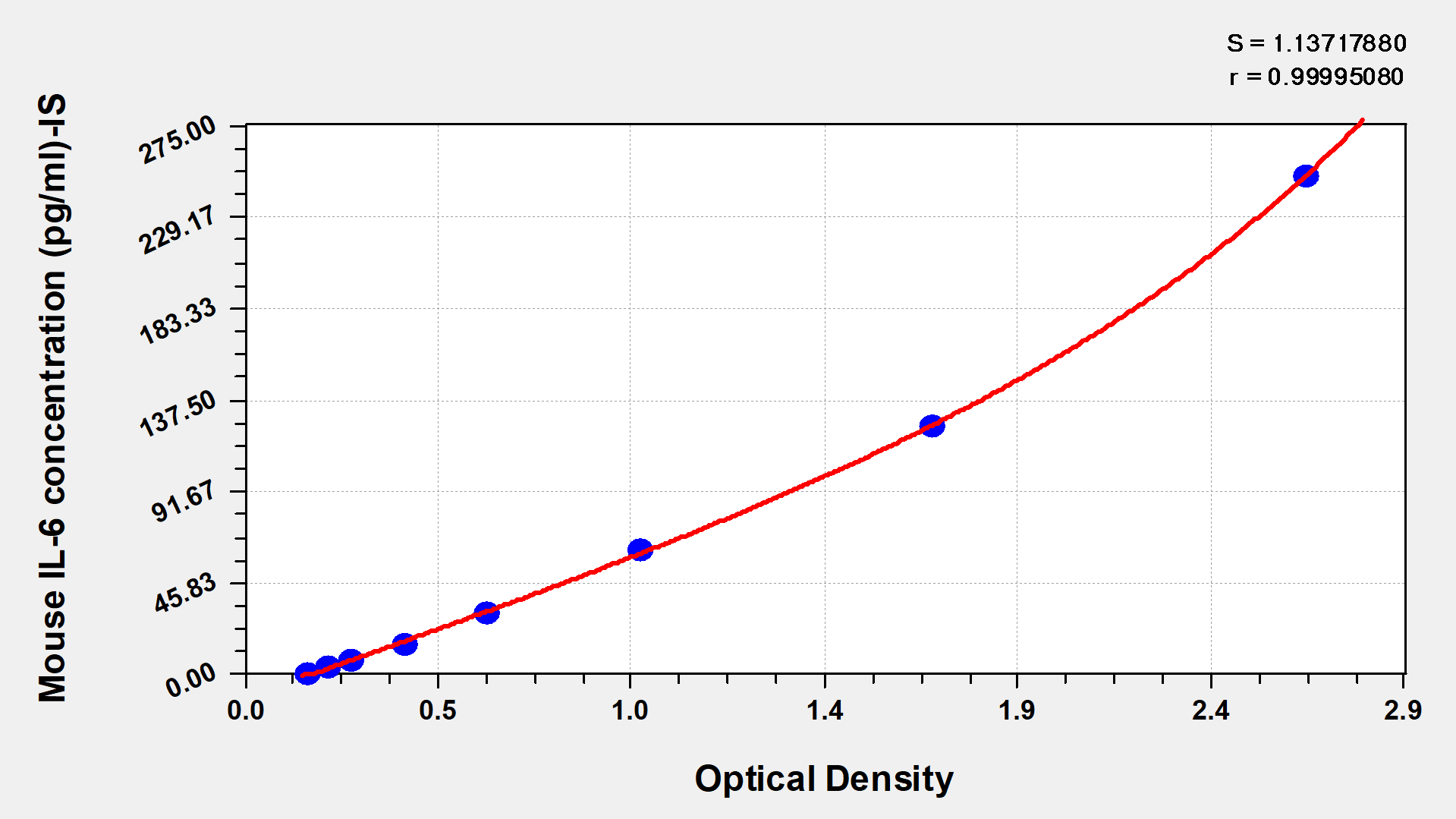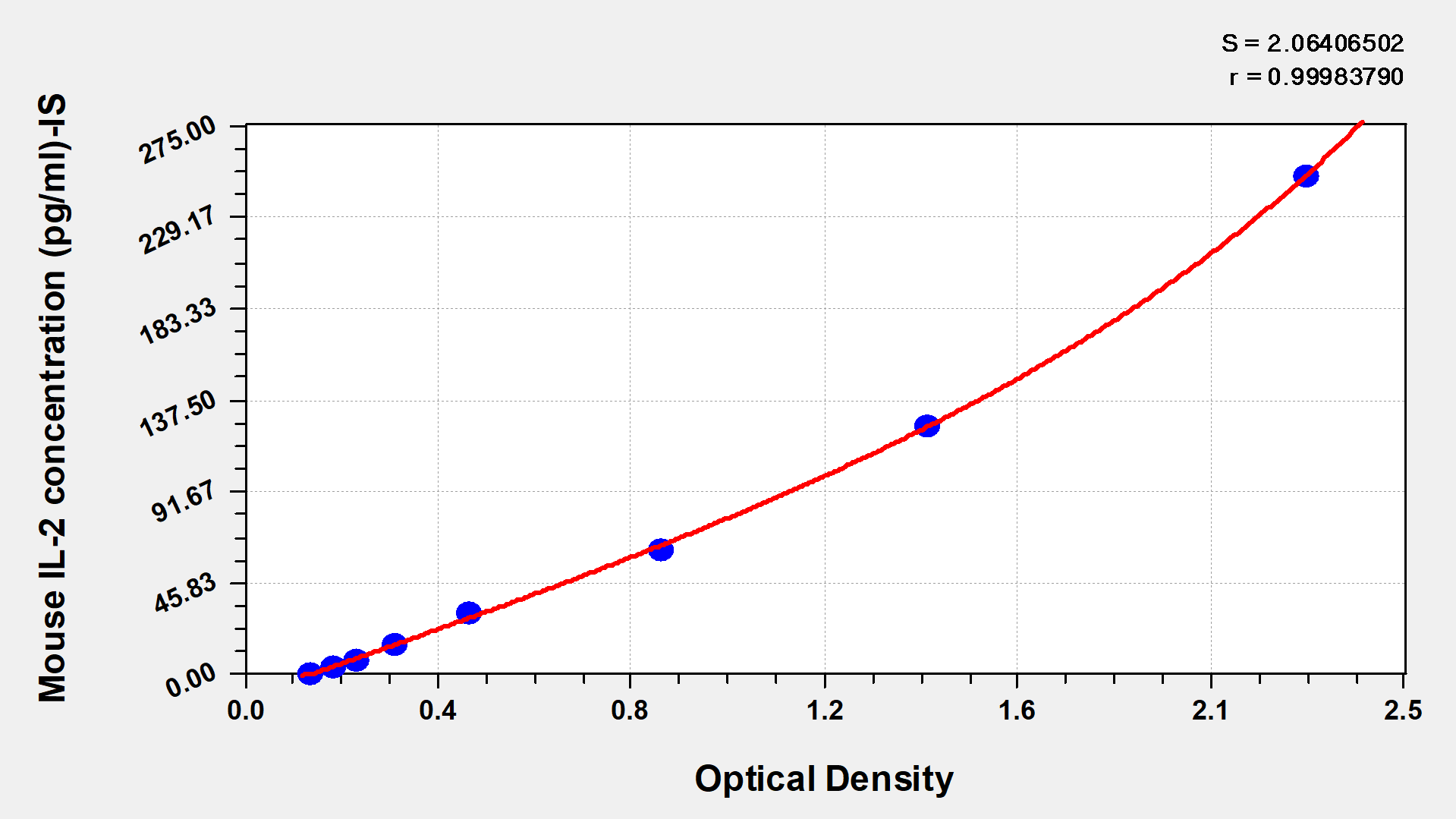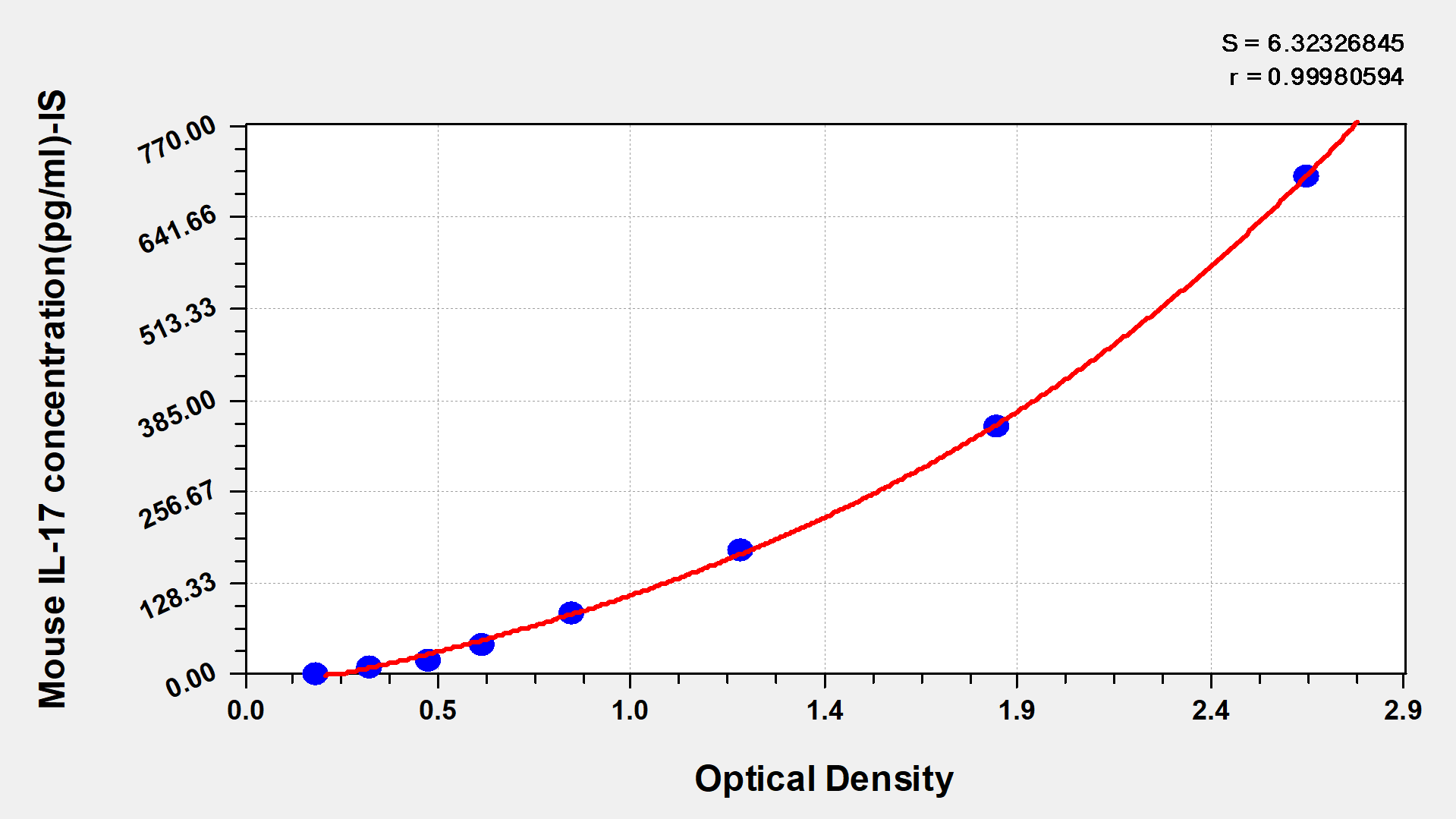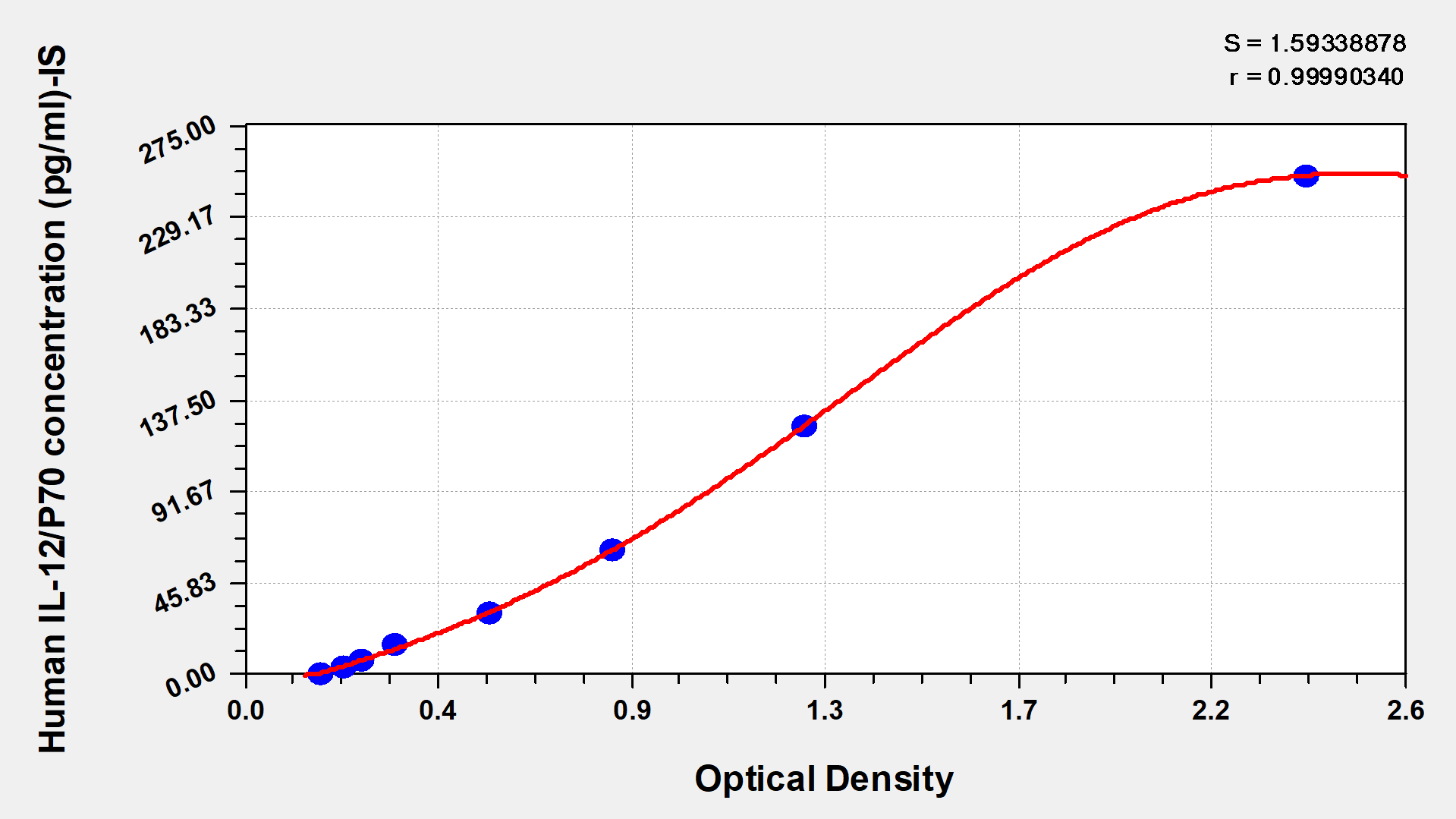-
中文名稱:
小鼠Cramp酶聯(lián)免疫試劑盒
-
貨號(hào):
CSB-E15061m
-
規(guī)格:
96T/48T
-
價(jià)格:
¥3600/¥2500
-
其他:

產(chǎn)品詳情
-
產(chǎn)品描述:
小鼠Cramp酶聯(lián)免疫試劑盒(CSB-E15061m)為雙抗夾心法ELISA試劑盒�,定量檢測(cè)血清�、血漿、組織培養(yǎng)上清液、組織勻漿樣本中的CAMP含量。CAMP�,即環(huán)磷酸腺苷��,是細(xì)胞內(nèi)重要的第二信使���。它廣泛參與細(xì)胞多種生理過程的信號(hào)傳導(dǎo)。其研究機(jī)制主要圍繞在激素等信號(hào)刺激下��,通過激活腺苷酸環(huán)化酶生成��,進(jìn)而調(diào)節(jié)蛋白激酶活性�,影響下游基因表達(dá)和細(xì)胞功能等���。試劑盒檢測(cè)范圍為1.56 pg/mL-100 pg/mL,本產(chǎn)品適用于基礎(chǔ)醫(yī)學(xué)研究�、藥物開發(fā)等領(lǐng)域的體外實(shí)驗(yàn),特別針對(duì)免疫相關(guān)動(dòng)物模型的組織微環(huán)境分析�����、炎癥因子調(diào)控機(jī)制探索等科研場(chǎng)景本品僅用于科研���,不用于臨床診斷�����,產(chǎn)品具體參數(shù)及操作步驟詳見產(chǎn)品說明書���。
-
別名:
Camp ELISA Kit; Cnlp ELISA Kit; CrampCathelicidin antimicrobial peptide ELISA Kit; Cathelin-like protein ELISA Kit; CLP) [Cleaved into: Cathelin-related antimicrobial peptide ELISA Kit; Cramp)] ELISA Kit
-
縮寫:
-
Uniprot No.:
-
種屬:
Mus musculus (Mouse)
-
樣本類型:
serum, plasma, cell culture supernates, tissue homogenates
-
檢測(cè)范圍:
1.56 pg/mL-100 pg/mL
-
靈敏度:
0.39 pg/mL
-
反應(yīng)時(shí)間:
1-5h
-
樣本體積:
50-100ul
-
檢測(cè)波長(zhǎng):
450 nm
-
研究領(lǐng)域:
Immunology
-
測(cè)定原理:
quantitative
-
測(cè)定方法:
Sandwich
-
精密度:
| Intra-assay Precision (Precision within an assay): CV%<8% | | | |
| Three samples of known concentration were tested twenty times on one plate to assess. | |
| Inter-assay Precision (Precision between assays): CV%<10% | | | |
| Three samples of known concentration were tested in twenty assays to assess. | | |
| | | | | | | |
-
線性度:
| To assess the linearity of the assay, samples were spiked with high concentrations of mouse cramp in various matrices and diluted with the Sample Diluent to produce samples with values within the dynamic range of the assay. |
| | Sample | Serum(n=4) | |
| 1:100 | Average % | 94 | |
| Range % | 89-98 | |
| 1:200 | Average % | 95 | |
| Range % | 91-98 | |
| 1:400 | Average % | 96 | |
| Range % | 90-102 | |
| 1:800 | Average % | 93 | |
| Range % | 87-99 | |
-
回收率:
| The recovery of mouse cramp spiked to levels throughout the range of the assay in various matrices was evaluated. Samples were diluted prior to assay as directed in the Sample Preparation section. |
|
| Sample Type | Average % Recovery | Range | |
| Serum (n=5) | 89 | 82-94 | |
| EDTA plasma (n=4) | 102 | 94-109 | |
| | | | | | | |
| | | | | | | |
-
標(biāo)準(zhǔn)曲線:
| These standard curves are provided for demonstration only. A standard curve should be generated for each set of samples assayed. |
|
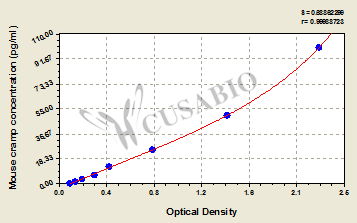 | pg/ml | OD1 | OD2 | Average | Corrected | | | 100 | 2.300 | 2.200 | 2.250 | 2.154 | | | 50 | 1.505 | 1.405 | 1.455 | 1.359 | | | 25 | 0.822 | 0.802 | 0.812 | 0.716 | | | 12.5 | 0.445 | 0.435 | 0.440 | 0.344 | | | 6.25 | 0.314 | 0.304 | 0.309 | 0.213 | | | 3.12 | 0.211 | 0.201 | 0.206 | 0.110 | | | 1.56 | 0.149 | 0.147 | 0.148 | 0.052 | | | 0 | 0.097 | 0.095 | 0.096 | | |
|
-
本試劑盒所含材料:
- A micro ELISA plate ---The 96-well plate has been pre-coated with an anti-mouse CRAMP antibody. This dismountable microplate can be divided into 12 x 8 strip plates.
- Two vials lyophilized standard ---Dilute a bottle of the standard at dilution series, read the OD values, and then draw a standard curve.
- One vial Biotin-labeled CRAMP antibody (100 x concentrate) (120 μl/bottle) ---Act as the detection antibody.
- One vial HRP-avidin (100 x concentrate) (120 μl/bottle) ---Bind to the detection antibody and react with the TMB substrate to make the solution chromogenic.
- One vial Biotin-antibody Diluent (15 ml/bottle) ---Dilute the Biotin-antibody.
- One vial HRP-avidin Diluent (15 ml/bottle) ---Dilute the HRP-avidin solution.
- One vial Sample Diluent (50 ml/bottle)---Dilute the sample to an appropriate concentration.
- One vial Wash Buffer (25 x concentrate) (20 ml/bottle) ---Wash away unbound or free substances.
- One vial TMB Substrate (10 ml/bottle) ---Act as the chromogenic agent. TMB interacts with HRP, eliciting the solution turns blue.
- One vial Stop Solution (10 ml/bottle) ---Stop the color reaction. The solution color immediately turns from blue to yellow.
- Four Adhesive Strips (For 96 wells) --- Cover the microplate when incubation.
- An instruction manual
顯示更多
收起更多
-
本試劑盒不含材料:
- A microplate reader capable of measuring absorbance at 450 nm, with the correction wavelength set at 540 nm or 570 nm.
- An incubator can provide stable incubation conditions up to 37°C±5°C.
- Centrifuge
- Vortex
- Squirt bottle, manifold dispenser, or automated microplate washer
- Absorbent paper for blotting the microtiter plate
- 50-300ul multi-channel micropipette
- Pipette tips
- Single-channel micropipette with different ranges
- 100ml and 500ml graduated cylinders
- Deionized or distilled water
- Timer
- Test tubes for dilution
顯示更多
收起更多
-
數(shù)據(jù)處理:
-
貨期:
3-5 working days
引用文獻(xiàn)
-
Helminth reshapes host gut microbiota and immunoregulation by deploying an antimicrobial program of innate immunity
Y Zou, L Pu, A Guo, Y Li, Y Liu, Y Wang, Y Ding,Gut Microbes,2025
-
SEPSIS-INDUCED LIPID DROPLET ACCUMULATION ENHANCES ANTIBACTERIAL INNATE IMMUNITY
FS Pereira-Dutra, JC Santos, EK Souza, RV Savi,bioRxiv,2025
-
Hippo pathway and NLRP3-driven NETosis in macrophages: Mechanisms of viral pneumonia aggravation
L Pan,Cell Death Discovery,2024
-
Mycobacterium tuberculosis suppresses host antimicrobial peptides by dehydrogenating L-alanine
C Peng,Nature communications,2024
-
Antimicrobial peptide-producing dermal preadipocytes defend against Candida albicans skin infection via the FGFR-MEK-ERK pathway
J Wang,PLoS pathogens,2023
-
Cathelicidin-related antimicrobial peptide protects against enteric pathogen-accelerated type 1 diabetes in mice.
L Jia,Theranostics,2022
-
Cathelicidin-related antimicrobial peptide protects against cardiac fibrosis in diabetic mice heart by regulating endothelial-mesenchymal transition
Zheng X, et al,International Journal of Biological Sciences,2019
-
Double-stranded RNA induces cathelicidin expression in the intestinal epithelial cells through phosphatidylinositol 3-kinase-protein kinase Cζ-Sp1 pathway and ameliorates shigellosis in mice
Atri Ta.et al,Cell Signal. ,2017
靶點(diǎn)詳情
-
功能:
Acts as a potent antimicrobial peptide.
-
基因功能參考文獻(xiàn):
- Mice treated with BMMNCs pre-incubated with CRAMP had smaller scars, enhanced cardiac recovery and less adverse remodeling. Histologically, this group had higher capillary density. Similarly, sustained CRAMP release from hydrogels enhanced the therapeutic effect of SDF-1, leading to enhanced functional recovery PMID: 29948752
- LL-37/CRAMP represents an important mediator of platelet activation and thrombo-inflammation. PMID: 29670076
- CRAMP deficiency impairs phagocytosis in cultured microglia cells after exposure to N. meningitides. PMID: 28915816
- Immunoblotting, qPCR, ChIP and siRNA-mediated gene knockdown studies revealed that the activation of phosphatidylinositol 3-kinase/protein kinase C zeta pathways in poly(I:C)-stimulated cells underlies Sp1 phosphorylation and recruitment to the mCRAMP promoter, leading to enhanced transcription PMID: 28343946
- The effect on insulin resistance found in Cramp-/- mice is solely due to leukocyte infiltration and not due to inflammatory phenotype of macrophages. Therefore we conclude that cathelicidin causes insulin resistance by the recruitment of myeloid cells into the adipose tissue. PMID: 26939624
- Cathelicidin is required for innate resistance to M. tuberculosis in a relevant animal model and is a key mediator in regulation of the levels of pro-inflammatory cytokines by calcium and cyclic nucleotides. PMID: 28097645
- Histological examination confirmed that CRAMP deficiency worsened the pancreatic inflammatory condition. These results indicate that CRAMP may be considered a novel modulatory mediator in mouse experimental AP. PMID: 27035328
- promotes olfactory epithelium inflammation PMID: 26346056
- overexpressed CRAMP in prostate tumor initially chemoattracts early myeloid progenitors to tumor microenvironment and mediates differentiation and polarization of early myeloid progenitors into protumorigenic M2 macrophages during PCa progression PMID: 26856684
- critical role in prevention of RSV-mediated disease postinfection exogenously applied LL-37 is protective against RSV-mediated disease in vivo. PMID: 26873992
- The aim of this project was to examine the functional impact of the human cathelicidin LL-37 and the mouse cathelicidin-related AMP (CRAMP) on the pathogenesis of lupus and arthritis. PMID: 25535966
- pancreatic beta-cells' production is controlled by short-chain fatty acids produced by the gut microbiota, and is defective in non-obese diabetic (NOD) mice PMID: 26253786
- Data indicate the role of cathelicidin-related antimicrobial peptide (CRAMP) as part of the innate immune defense against pathogens in bacterial CNS infections. PMID: 23969854
- Hypoxia-inducible factor-1alpha (HIF-1alpha), a transcription factor important for activating innate immune effectors, and the antimicrobial peptide LL-37 (CRAMP in mice) are key determinants of C. albicans colonization resistance. PMID: 26053625
- Specific structural motifs in syndecan-1 HS promote Staphylococcus aureus corneal infection by inhibiting neutrophil CRAMP. PMID: 25931123
- these findings show that the production of an antimicrobial peptide Camp by adipocytes is an important element for protection against S. aureus infection of the skin PMID: 25554785
- Cathelicidin-deficient (Cnlp(-/-)) mice produce much less LTB4 and TXB2 in vivo in response to TNF-alpha compared with control mice. PMID: 24736410
- observations indicate a nonredundant role for Fpr2 and its agonist CRAMP in DC maturation in immune responses. PMID: 24808174
- Expression of the antimicrobial peptide cathelicidin in the context of inflammation and in non-tumorous cells is an important factor for lung tumor growth. PMID: 23812430
- Citrullination alters immunomodulatory function of LL-37 essential for prevention of endotoxin-induced sepsis. PMID: 24771854
- visfatin enhances CAMP, hBD-2, hBD-3, and S100A7 production in human keratinocytes and their orthologs in murine imiquimod-treated psoriatic skin. PMID: 23499548
- These data demonstrated that Salmonella Typhimurium PhoQ can sense cationic antimicrobial peptides and CRAMP serves as a putative direct PhoPQ activation signal in the mouse intestine. PMID: 22919691
- suppresses osteoclastogenesis induced by LPS and flagellin PMID: 23826736
- Collectively, these findings indicate that cathelicidin protects against H. pylori infection and its associated gastritis in vivo. Our study also demonstrates the feasibility of using the transformed food-grade bacteria to deliver cathelicidin. PMID: 23254369
- this investigation revealed an indispensable role for BD3, BD4, and CRAMP in defense against F. solani-induced keratitis PMID: 23670560
- Neutrophil-derived cathelicidin promotes adhesion of classical monocytes. PMID: 23283724
- TLR9 can induce the expression of antimicrobial peptides such as CRAMP in response to bacterial DNA motifs in primary glial cells. PMID: 23141747
- LL-37 activates caspase-1 in murine macrophages, resulting in release of active IL-1beta & IL-18. LL-37 activation of the NLRP3 inflammasome utilizes P2X7 receptor-mediated potassium efflux. PMID: 23267025
- CRAMP may exert important immunomodulatory effects that regulate lung injury and Gram-negative bacterial dissemination. PMID: 22634613
- CRAMP promotes atherosclerosis by enhancement of the recruitment of inflammatory monocytes. PMID: 22394519
- The role of the Src family kinase Lyn in the immunomodulatory activities of cathelicidin peptide LL-37 on monocytic cells PMID: 22246800
- Cathelicidin signaling via the Toll-like receptor (TLR9) protects against colitis in mice. PMID: 21762664
- results suggest that mCRAMP differentially regulates B- and T-cell function and implicate mCRAMP in the regulation of adaptive immune responses. PMID: 21773974
- ER stress increases CAMP expression via NF-kappaB-C/EBPalpha activation, independent of VDR, illuminating a novel VDR-independent role for ER stress in stimulating innate immunity. PMID: 21832078
- The presence of pronounced host inflammatory infiltration in lesions and lymph nodes of Leishmania-infected animals was CAMP-dependent. PMID: 21501359
- LL-37 induces apoptosis in CTLs via multiple different mechanisms, initiated by the LL-37-induced leakage of granzymes from cytolytic granules PMID: 21134367
- Data show that cathelicidin is highly produced during experimental pulmonary tuberculosis from diverse cellular sources and could have significant participation in its pathogenesis. PMID: 20636399
- Data show flagellin-induced protection was partially abrogated in cathelicidin-related antimicrobial peptide-deficient mice. PMID: 20566829
- CRAMP, the unique antimicrobial peptide derived from cathelin in mouse inhibited all the responses coupled to P2X(7) receptors in macrophages from wild type mice. PMID: 19913495
- an important native component of innate host defence in mice and provide protection against necrotic skin infection caused by Group A Streptococcus (GAS). PMID: 11719807
- solution structure in TFE/H2O solution determined by CD and NMR spectroscopy PMID: 12081622
- Cathelicidins are localized in the cytoplasmic granules of murine bone marrow-derived mast cells and directly participate in the mast cell immune response. PMID: 12594247
- cathelicidin expression (CRAMP) in the skin is 10- to 100-fold greater in the perinatal period than adult PMID: 12612195
- Intracellular reactive oxygen intermediates and proteases regulate macrophage CRAMP expression and activity to impair the replication of an intracellular bacterial pathogen. PMID: 14983025
- cathelicidin antimicrobial peptides are expressed in murine mammary glands PMID: 15531744
- Mig-14 and VirK inhibit binding of CRAMP to Salmonella typhimurium and thus promote bacterial resistance to CRAMP PMID: 15661016
- important component of innate antimicrobial defense in the colon PMID: 15814717
- CRAMP functions as both a chemoattractant for phagocytic leukocytes and an enhancer of adaptive immune response. PMID: 15879124
- role of cathelicidin in host susceptibility to HSV infection PMID: 16630942
- Data describe the production and function of the cathelicidin antimicrobial peptides LL-37, its precursor hCAP-18 and its ortholog CRAMP in epithelial cells of human and mouse urinary tract, respectively. PMID: 16751768
顯示更多
收起更多
-
亞細(xì)胞定位:
Secreted.
-
蛋白家族:
Cathelicidin family
-
組織特異性:
Expressed in testis, spleen, stomach, and intestine. Very low expression found in heart, lung and skeletal muscle. No expression in brain, kidney or liver.
-
數(shù)據(jù)庫(kù)鏈接:
Most popular with customers





